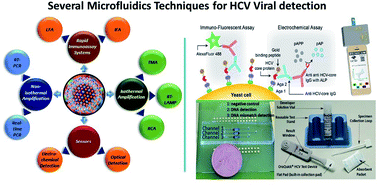Hepatitis C virus (HCV) diagnosis via microfluidics
Abstract
Humans are subjected to various diseases; hence, proper diagnosis helps avoid further disease consequences. One such severe issue that could cause significant damage to the human liver is the hepatitis C virus (HCV). Several techniques are available to detect HCV under various categories, such as detection through antibodies, antigens, and RNA. Although immunoassays play a significant role in discovering hepatitis viruses, there is a need for point-of-care tests (POCT). Some developing strategies are required to ensure the appropriate selection of POCT for HCV detection, initiate appropriate antiviral therapy, and define associated risks, which will be critical in achieving optimal outcomes. Though molecular assays are precise, reproducible, sensitive, and specific, alternative strategies are required to enhance HCV diagnosis among the infected population. Herein, we described and assessed the potential of various microfluidic detection techniques and confirmatory approaches used in present communities. In addition, current key market players in HCV chip-based diagnosis and the future perspectives on the basis of which the diagnosis can be made easier are presented in the present review.

- This article is part of the themed collection: Recent Review Articles


 Please wait while we load your content...
Please wait while we load your content...